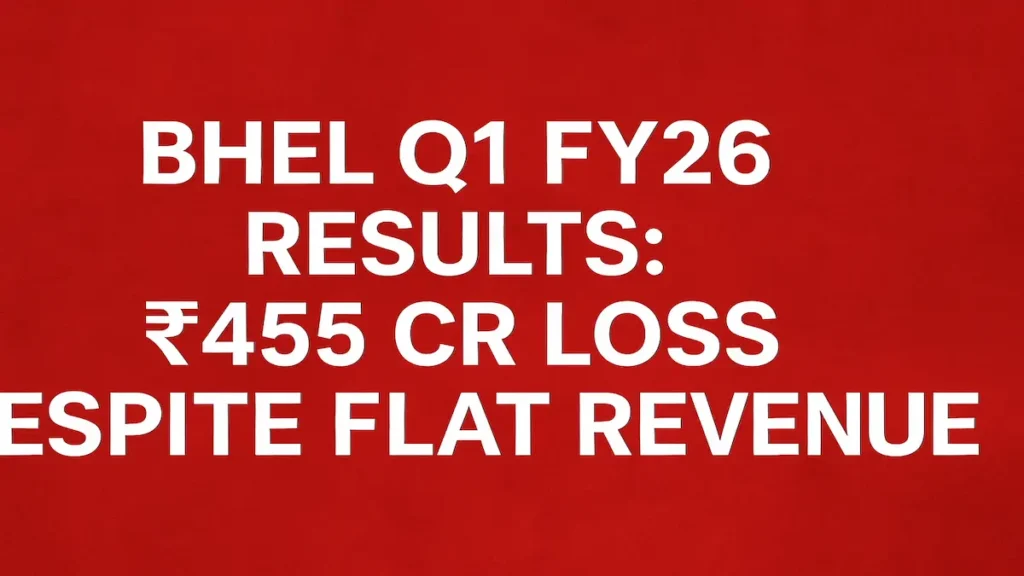BHEL’s numbers for the April–June 2025 quarter are out, and they aren’t pretty. The company posted a net loss of ₹455.5 crore, more than double the ₹211.4 crore loss it reported a year ago. This happened even though revenue held steady at ₹5,658 crore, just a notch above last year’s ₹5,581 crore.
Expenses shot up. Total costs for the quarter came in at ₹6,279 crore, compared to ₹5,875 crore in the same quarter last year. That alone wiped out any benefit from holding onto revenue.
But the real blow came from BHEL’s power segment.
Power Business Took a Hit
Power orders have always been BHEL’s bread and butter. This quarter, that segment brought in ₹3,899 crore—down from ₹4,128 crore last year. That drop might look small, but the impact was huge.
The division posted a loss of ₹510 crore. Last year, it lost only ₹54 crore.
Weather didn’t help. An early monsoon reduced electricity demand, and that cooled interest in new power equipment. For a company like BHEL, that’s a direct hit.
Industry Segment Shows Some Muscle
While the power segment struggled, the industry division picked up the slack. It generated ₹1,588 crore in revenue and delivered a profit of ₹306 crore. That’s a big improvement from the ₹63 crore it made in Q1 last year.
Still, it wasn’t enough to offset the damage from the power business.
Operational Losses Keep Growing
BHEL’s operations also bled more this time around. Its EBITDA loss ballooned to ₹537 crore, compared to ₹169 crore last year. The gap shows how fast costs are climbing—and how hard it is for the company to stay ahead.
Orders Are Rolling In—But Money Isn’t
Here’s the strange part. BHEL isn’t short on work. The company bagged ₹13,445 crore worth of new orders during the quarter. Its order book now stands at ₹2.04 lakh crore. That’s massive.
But landing orders is one thing. Executing them and getting paid is another.
BHEL is still chasing old dues. It’s trying to recover ₹211 crore from a project in Sudan and ₹185 crore from RVUNL’s Suratgarh project. RVUNL has coughed up ₹90 crore, but the rest is stuck.
The company hasn’t written off the unpaid amounts. Management says it’s confident the money will come. For now, that confidence is being tested.
Market Reacts
Investors didn’t take the results lightly. BHEL’s stock dropped more than 3%, closing around ₹239.83 on the NSE.
Even so, some brokerages remain hopeful. UBS has given BHEL a “Buy” rating, betting that demand for power infrastructure will rise again—especially with India’s continued push into energy and manufacturing.
BHEL has the orders. It has the legacy. But right now, it’s stuck between heavy costs and a sluggish market.
For things to improve, the company needs to speed up execution, keep its costs in check, and stop letting delays burn a hole in its pocket.
There’s potential here. But the clock is ticking.


